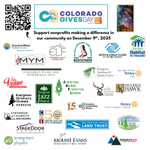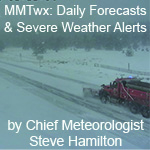Science For Kids
- jf1acai
-

- Mountain Legend
-

Because it's weaker, static electricity doesn't work as well to power light bulbs or appliances, but you can make it do some surprising things around the house.
You can also use it to make sure your computer will never work again.
Experience enables you to recognize a mistake when you make it again - Jeanne Pincha-Tulley
Comprehensive is Latin for there is lots of bad stuff in it - Trey Gowdy
Please Log in or Create an account to join the conversation.
- TPP
-

- User is blocked
-

- Posts: 4760
- Thank you received: 0
Animals can recognize which characters they control, a feature of self-awareness
Chimps playing a video game can apparently recognize which characters they control, a feature of self-awareness that could shed light on the evolution of the self in humans, researchers said.
The concept of the self — the awareness that one exists as an individual distinct from others — is a key aspect of the human mind, but much remains unknown about how it originated and evolved. However, the discovery that a range of animals can recognize themselves in mirrors, including apes, elephants, dolphins and even monkeys, suggests they might help us find out how our self-awareness came to be.
http://www.msnbc.msn.com/id/42898960/ns/technology_and_science-science/
Please Log in or Create an account to join the conversation.
- ScienceChic
-
 Topic Author
Topic Author
- Mountain Champion
-

- Posts: 15745
- Thank you received: 320
Under Pressure: Launch a Balloon Rocket
Bring Science Home: Activity 4
By Katherine Harmon | May 5, 2011
Key concepts
Energy
Propulsion and thrust
Pressure
Introduction
Have you ever wondered how a space shuttle launches all the way into outer space? It takes a lot of energy to make such a heavy object (4.5 million pounds at liftoff) go from standing still to blasting off toward space at more than 17,000 miles per hour—in just minutes!
www.scientificamerican.com/article.cfm?i...e-bring-science-home
Talk through a String Telephone
Bring Science Home: Activity 5
By Katherine Harmon | May 6, 2011
Key concepts
Sound
Waves
Hearing
Background
When we talk, our vocal cords make molecules in the air vibrate. (You can feel the vibrations by holding your hand against your throat while you talk.) Those vibrating air molecules make other air molecules around them vibrate, and so on, which is how sound travels through the air. (Different pitches of sound move in waves that have different spacing between them—or "frequency.")
But the particles in air are spread out from one another more than particles in a liquid or solid. So sound vibrations tend to peter out before they travel very far. Having a soft connective material, such as cotton string—which has a higher density, or number of molecules in a given amount of space, than air—can help the sound waves move over a greater distance.
www.scientificamerican.com/article.cfm?i...h-yeast-live-breathe
Yeast Alive! Watch Yeast Live and Breathe
Bring Science Home: Activity 6
By Katherine Harmon | May 9, 2011
Key concepts
Life
Food
Metabolism
Introduction
Have you ever looked closely at a piece of sandwich bread—really closely? Notice all of those tiny holes? They probably got there thanks to tiny living organisms called yeast. When you breathe out, part of what you are exhaling is a gas known as carbon dioxide. Yeast also releases carbon dioxide when it is active (although it's way too small and simple an organism to have lungs). Yeast are so small you can't see individual ones very well. So how can you tell if they are alive or not? You can enlist a whole bunch of them to blow up a balloon for you!
www.scientificamerican.com/article.cfm?id=muscle-versus-fat
Sink or Swim: Muscle versus Fat
Bring Science Home: Activity 7
By Katherine Harmon | May 10, 2011
Key concepts
Density
Body composition
Muscle and fat
Background
Some components of the body are denser than others. Try this activity to discover which substance is denser than water: muscle or fat.
Within most of the human—and animal—body, whether muscle, fat, blood or bone, is a lot of water. This means our bodies really are close to the density of water. But this activity can also help explain why some animals—and people—are more buoyant than others.
"Now, more than ever, the illusions of division threaten our very existence. We all know the truth: more connects us than separates us. But in times of crisis the wise build bridges, while the foolish build barriers. We must find a way to look after one another as if we were one single tribe.” -King T'Challa, Black Panther
The truth is incontrovertible. Malice may attack it. ignorance may deride it, but in the end, there it is. ~Winston Churchill
Please Log in or Create an account to join the conversation.
- ScienceChic
-
 Topic Author
Topic Author
- Mountain Champion
-

- Posts: 15745
- Thank you received: 320
Color-Changing Dots
Bring Science Home: Activity 8
By Molly Josephs | May 11, 2011
Key concepts
Traits
Generations
Natural selection
Introduction
Have you ever wondered why some animals are so well camouflaged in their environments? Have you ever seen a walking stick? It's an insect that looks just like a twig! How did it come to look so much like a stick? If walking sticks lived on sandy surfaces, would they be as hidden from their predators?
In different environments, certain appearances are more useful than others, especially when hiding from predators.
www.scientificamerican.com/article.cfm?i...a-bring-science-home
Find the DNA in a Banana
Bring Science Home: Activity 9
By Molly Josephs | May 12, 2011
Key concepts
Cells
DNA
Genes
Background
If we could zoom in on a single, tiny cell, we could see an even teenier "container" inside called a nucleus. It holds a stringy substance called DNA, which is like a set of blueprints, or instructions. DNA contains a code for how to build a life-form and put together the features that make that organism unique. Segments, or pieces, of DNA are called "genes". In living things, such as us, each gene determines something about our bodies—a trait. In our DNA there are genes that are responsible for hair color, eye color, earlobe shape and so on. We get our DNA from our parents. Some characteristics, like eye color, are pretty much entirely determined by DNA. Some are determined both by DNA and by your environment as you grow up, like how tall you will be as an adult. And some traits are not very directly tied to DNA at all, like the kind of books you like to read.
Just like us, banana plants have genes and DNA in their cells, and just like us, their DNA determines their traits. Using only our eyes, we couldn't see a single cell or the DNA inside of it. If we remove DNA from millions of cells, however, we will be able to view it without a microscope. That is what we will do today!
I still remember the first time I did a DNA isolation experiment and got to see it first-hand - it was the coolest thing!
"Now, more than ever, the illusions of division threaten our very existence. We all know the truth: more connects us than separates us. But in times of crisis the wise build bridges, while the foolish build barriers. We must find a way to look after one another as if we were one single tribe.” -King T'Challa, Black Panther
The truth is incontrovertible. Malice may attack it. ignorance may deride it, but in the end, there it is. ~Winston Churchill
Please Log in or Create an account to join the conversation.
- ScienceChic
-
 Topic Author
Topic Author
- Mountain Champion
-

- Posts: 15745
- Thank you received: 320
For the Birds: Best-Adapted Beaks
Bring Science Home: Activity 10
By Molly Josephs | May 13, 2011
Key concepts
Adaptation
Traits
Evolution
Introduction
Have you ever thought about the differences between a hummingbird and a hawk? They are both birds and yet they look nothing alike! Why do you think they look so different?
Today we will explore how, in different environments with different food types, specific adaptations, or changes in physical features, are more beneficial than others. You will use common household items and seeds, grains and nuts to mimic how birds might use their beaks to pick up food.
www.scientificamerican.com/article.cfm?i...s-bring-science-home
Make Craters with Mini-Meteors
Bring Science Home: Activity 11
By Katherine Harmon | May 16, 2011
Key concepts
Gravity
Meteors
Plate tectonics
Introduction
The surface of the moon is full of jagged craters. This rough surface comes from millions of years of collisions with rocks—called meteors—that crash into its surface. Why doesn't Earth's surface look like that?
www.scientificamerican.com/article.cfm?i...e-bring-science-home
Make Moon Cycles--with an Orange!
Bring Science Home: Activity 12
By Katherine Harmon | May 17, 2011
Key concepts
Sun and moon
Solar system
Orbits
www.scientificamerican.com/article.cfm?i...t-bring-science-home
Washed Away: Rivers and Streams in an Instant
Bring Science Home: Activity 13
By Katherine Harmon | May 18, 2011
Key concepts
Water
Gravity
Erosion
Introduction
How do babbling brooks and mighty rivers come to be? They both depend on two things: water and gravity. Although they might look flat, rivers and streams are always flowing slightly downhill. Eventually, most of the water dumps into lakes, seas or the ocean.
But what determines the size and shape of a river? Can a small stream turn into a rushing river over time? Get ready to watch this amazing and powerful process happen in record time.
www.scientificamerican.com/article.cfm?i...m-bring-science-home
Big Space: The Scale of the Solar System
Bring Science Home: Activity 14
By Katherine Harmon | May 19, 2011
Key concepts
Solar system
Space
Planets
Introduction
Have you ever built a model of the solar system for school—or even just seen a picture of the solar system in a book? The planets are usually pretty close together—and close to the sun. In the real world (that is, in the real solar system) the planets are incredibly far apart from one another and from the sun (which is a good thing for us; if Earth were close to the sun, it would be too hot for us to live!).
• Extra: Want to get a better sense of how small the planets are compared with the sun? Try using a grapefruit—about four inches (10 centimeters) in diameter—as the sun. If the planets were to be proportionally sized and spaced in this model, Mercury—the closest planet to the Sun—would be a grain of table salt 13 feet, 10.5 inches (4.2 meters) away. Venus would be about the size of a grain of sea salt 25 feet, 10.7 inches (7.9 meters) away from the sun. And Earth would also be about the size of a rough grain of sea salt—35 feet, 8.2 inches (10.9 meters) away from the sun. What about Neptune? It would be more than 1,416 feet (431.6 meters) away from a grapefruit-size sun.
• Extra: Want to try building a solar system with other size objects? Try plugging in their sizes in the Exploratorium's Build a Solar System Model calculator. http://www.exploratorium.edu/ronh/solar_system/
www.scientificamerican.com/article.cfm?i...l-bring-science-home
Get the Iron out--of Your Breakfast Cereal
Bring Science Home: Activity 15
By Katherine Harmon | May 20, 2011
Key concepts
Elements
Metals
Magnetism
Introduction
What does your breakfast cereal have in common with Earth's crust? They both have some of the same materials in them. It might seem strange to compare a bowl of cornflakes to a pile of dirt. But science can help us find one of the most common elements on Earth in your cereal: iron.
Like many metals, iron is magnetic, so if you have a strong enough magnet, you will be able to pick it up. Will you be able to pick up your box of breakfast cereal just by magnetic force alone? No, because it doesn't contain enough iron for the magnetism to overpower gravity pulling the weight of all that cereal down. But we are going to find a way to remove—or "extract"—the iron from that cereal and pick it up with a magnet.
www.scientificamerican.com/article.cfm?i...s-bring-science-home
Find Magnetic North with a Homemade Compass
Bring Science Home: Activity 16
By Katherine Harmon | May 23, 2011
Key concepts
Magnetism
Tools
Earth's poles
Introduction
Have you ever wondered how a compass works? Traditional compasses (not the digital kind found in smart phones and other devices) are tools that take advantage of a natural feature of Earth: the planet's magnetic poles. With a compass, you can find out which way a magnetic pole is—and from that, you can approximate other directions such as where south, east and west are as well.
Compasses might seem complicated, and the magnetic poles of the Earth might seem very far away. But you can build a working compass at home! Below is an easy way to tap into the Earth's magnetic field—and help orient yourself in the process.
"Now, more than ever, the illusions of division threaten our very existence. We all know the truth: more connects us than separates us. But in times of crisis the wise build bridges, while the foolish build barriers. We must find a way to look after one another as if we were one single tribe.” -King T'Challa, Black Panther
The truth is incontrovertible. Malice may attack it. ignorance may deride it, but in the end, there it is. ~Winston Churchill
Please Log in or Create an account to join the conversation.
- CinnamonGirl
-

- Visitor
-

I own none of this song other than the parody lyrics!!! This is what a few friends and I did for our end of the year calc project! Sean, David, Cody and Jordan rock out to "Born This Way" by Lady Gaga
Please Log in or Create an account to join the conversation.
- CinnamonGirl
-

- Visitor
-

[youtube:3n7tdtzb][/youtube:3n7tdtzb]
[youtube:3n7tdtzb][/youtube:3n7tdtzb]
Please Log in or Create an account to join the conversation.
- ScienceChic
-
 Topic Author
Topic Author
- Mountain Champion
-

- Posts: 15745
- Thank you received: 320
www.scientificamerican.com/article.cfm?i...e-bring-science-home
Jumping Heartbeat: Exercise Your Pulse
Bring Science Home: Activity 17
By Katherine Harmon | May 24, 2011
Key concepts
Cardiovascular system
Exercise
Energy and metabolism
When you exercise, do you notice that you get out of breath? What about feeling your heart rate—your pulse—increasing? These two changes are not coincidental—they are both important, and natural, reactions of your cardiovascular system to exercise.
From your brain down to your fingers and toes, your body needs plenty of oxygen to keep going. That oxygen is carried through your body in the bloodstream. Blood is pumped through the heart and picks up oxygen as it passes by the lungs.
Let's track your heart kicking it into high gear during exercise.
www.scientificamerican.com/article.cfm?i...n-bring-science-home
Clean Dirty Water with the Sun
Bring Science Home: Activity 18
By Katherine Harmon | May 25, 2011
Key concepts
Water cycle
Evaporation
Pollution
Have you ever seen a stream or river right after a big rainstorm? The water is often muddy—and full of leaves, sticks and other things that were washed in by the rain. Even though it's the same water that moves from sky to ground and back to the sky again, when it rains again, the rain isn't muddy or full of sticks. Why is that?
How does the water become clean again? The process involves evaporation, and we'll demonstrate that today and clean a little water while we're at it!
www.scientificamerican.com/article.cfm?i...s-when-glaciers-melt
High Seas: What Happens When the Glaciers Melt?
Bring Science Home: Activity 19
By Katherine Harmon | May 26, 2011
Key concepts
Ice and water
Oceans and land
Climate change
Look outside. Can you see any ice? What about in the middle of summer? Believe it or not, about 10 percent of the planet's land is actually covered in ice—year round! The ice in these places, such as Antarctica or on very high mountain ranges, is usually in big pieces called glaciers or ice sheets. It can stay there if the temperature stays cool enough and enough snow falls to replace whatever ice melts off when the temperature gets above freezing.
All of that ice is made from an awful lot of water. And when that water melts, much of it ends up in the oceans. How might that affect us? We can get a fast-paced peek at this process that is going on right now with just a couple of ice cubes and some clay.
www.scientificamerican.com/article.cfm?i...w-bring-science-home
Recycle! Make Old Paper New
Bring Science Home: Activity 20
By Katherine Harmon | May 27, 2011
Key concepts
Resources
Recycling
Energy
Do you recycle paper when you finish using it? New paper comes from trees, which are chopped into tiny pieces and then ground up, mixed with liquid and turned into pulp. The pulp is then flattened and turned into paper. But paper is easily recycled, which helps to reduce the number of trees that have to be cut down.
In the U.S., each person uses an average of 663 pounds of paper products each year. About 60 percent of paper gets recycled (the rest ends up in landfills or other trash-disposal areas). Where does that paper go when it gets recycled? A lot of it ends up as more paper!
The most commonly recycled type of paper is newspaper, and today we're going to recycle our own newspaper and turn it into new paper.
Bringing Science Home - recap what it was all about!
For the month of May 2011, Scientific American will feature one science- related activity each weekday, which parents and their six- to 12-year-olds can do together. We consulted with members of the National Science Teachers Association so that the activities would echo themes taught in early grades. Parents will also find additional background to help them explain the concepts. But the overarching goal was simple: each activity had to be easy and fun, done with household ingredients and completed in less than an hour.
"Now, more than ever, the illusions of division threaten our very existence. We all know the truth: more connects us than separates us. But in times of crisis the wise build bridges, while the foolish build barriers. We must find a way to look after one another as if we were one single tribe.” -King T'Challa, Black Panther
The truth is incontrovertible. Malice may attack it. ignorance may deride it, but in the end, there it is. ~Winston Churchill
Please Log in or Create an account to join the conversation.
- ScienceChic
-
 Topic Author
Topic Author
- Mountain Champion
-

- Posts: 15745
- Thank you received: 320
Keep Your Candy Cool with Physics
Sweet science from Science Buddies
By Science Buddies and Cyberchase | October 27, 2011
Introduction
Have you ever wondered how sweating helps keep you cool on a hot summer day? Sweat, which is mostly water, cools us down when it evaporates. When water evaporates, it changes from a liquid to a gas. The gas carries away heat with it, helping to remove heat from your skin.
Not only can evaporation cool down your body, it can also cool down other things, such as chocolate. Heat on a hot summer day can turn your solid candy bar into a gooey, melted mess, but how well can evaporation keep your chocolate from melting?
Procedure
• Take one paper towel strip and wet it in the bowl of water. Carefully wring it out.
• Keeping the chocolate candies in their wrappers, wrap one candy in the wet paper towel strip and the other candy in a dry paper towel strip.
• Put the two candies side by side underneath the lamp. Be careful not to get the dry paper towel strip wet. Adjust the lamp (or place the candies on books if the lamp is not adjustable) so that the lightbulb is only one to two inches away from the candy, and evenly distanced from both candies.
• Turn on the lamp light and leave it lit for 10 minutes.
• After 10 minutes turn the lamp off, remove the paper towel strips from the candies and carefully unwrap them.
• For each candy, try to flatten the wrappers around the candy, if possible, to more easily inspect the entire candy and the wrapper. How melted does the candy that was in the wet paper towel strip look compared with the one in the dry strip? Are there larger areas melted on one candy compared with the other? Is there more melted chocolate on one wrapper than the other?
Observations and results
Were you able to see the effect of evaporation on the chocolate candies? Did the candy wrapped in the wet paper towel show fewer signs of melting than the one wrapped in the dry towel?
More to explore
"Digit's B-Day Surprise," CYBERCHASE from Thirteen/WNET, Educational Broadcasting Corporation, New York
The Water Cycle: Evaporation , from USGS
"What's Sweat?" from KidsHealth
"Now, more than ever, the illusions of division threaten our very existence. We all know the truth: more connects us than separates us. But in times of crisis the wise build bridges, while the foolish build barriers. We must find a way to look after one another as if we were one single tribe.” -King T'Challa, Black Panther
The truth is incontrovertible. Malice may attack it. ignorance may deride it, but in the end, there it is. ~Winston Churchill
Please Log in or Create an account to join the conversation.







